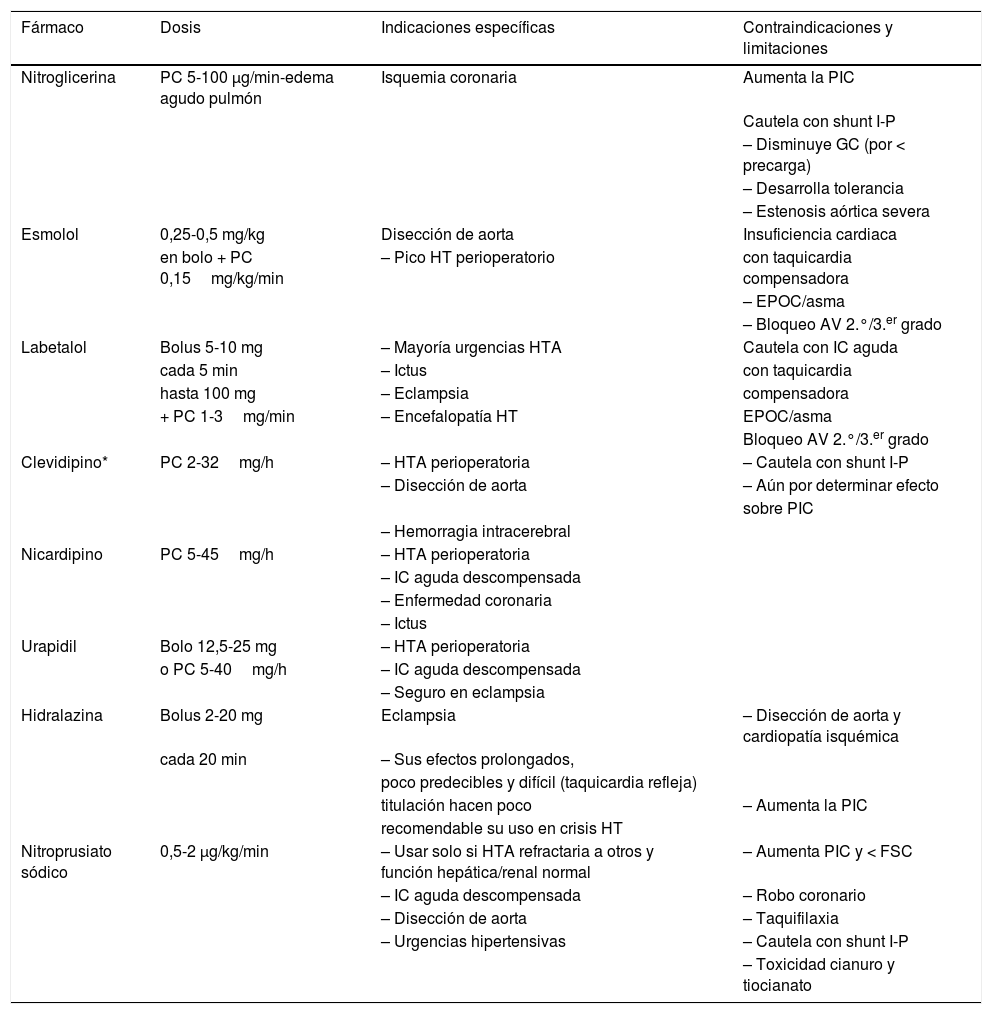Una presión arterial media intraoperatoria < 60-70mmHg se asocia con mayor daño miocárdico (myocardial infarction in non-cardiac surgery), daño renal agudo y mortalidad. Una presión arterial sistólica < 100mmHg se asocia con mayor daño miocárdico y mortalidad. El daño se relaciona con la severidad y la duración de la hipotensión intraoperatoria. Se recomienda evitar la caída de la presión arterial media por debajo de > 30% de la basal. Parece razonable normalizar la presión arterial media a valores basales en rango cuanto antes. Siendo la presión arterial basal, la presión arterial habitual en casa o en su defecto la presión arterial en la consulta preanestésica.
Aunque la evidencia no es concluyente, parece razonable evitar los picos hipertensivos de presión arterial sistólica > 180mmHg o presión arterial media > 110mmHg, siempre teniendo en cuenta que existe más evidencia del daño de la caída de la presión arterial media por debajo de > 30%, que del aumento de la presión arterial sistémica > 180mmHg.
En pacientes seleccionados (shock séptico grave, hipovolemia grave, disfunción sistólica grave ventrículo izquierdo), es razonable el uso de una dosis baja de vasopresor profiláctico, el uso de hipnóticos con menor efecto sobre las resistencias vasculares sistémicas (etomidato o quetamina) para evitar la hipotensión asociada a la inducción anestésica.
En pacientes seleccionados (hipertensión arterial crónica mal controlada, mayores de 70 años), es razonable la atenuación hemodinámica de la laringoscopia e intubación mediante fármacos de vida media corta.
Una cuestión importante que puede determinar el fármaco a usar para el tratamiento de la hipertensión arterial es saber la causa de la hipertensión arterial y la existencia de problemas asociados en el momento del pico hipertensivo.
Intraoperative mean blood pressure of <60-70mmHg is associated with a higher prevalence of myocardial injury in non-cardiac surgery, acute kidney injury and mortality. Systolic blood pressure of <100mmHg is also associated with an increase rate of myocardial injury in non-cardiac surgery and mortality.
The injury is related to the severity and duration of intraoperative hypotension episode. Avoiding the mean arterial blood pressure to decrease below >30% of baseline, is recommended. It is reasonable to normalize mean blood pressure to baseline values as soon as possible. Baseline blood pressure defined as the usual blood pressure at home or blood pressure in the preoperative assessment. Although the evidence is not conclusive, it is reasonable to avoid the blood pressure to increase >180mmHg or mean blood pressure >110mmHg. Importantly, noting that current evidence shows there is a much higher risk of injury associated with a mean blood pressure lower than >30% of baseline, than associated with an increase of systolic blood pressure >180mmHg.
It is reasonable to use low dose of prophylactic vasopressors, as well as, hypnotics with less effect on systemic vascular resistance (etomidate or ketamine) on high risk patients (severe septic shock, severe hypovolemia, severe left or right ventricle systolic impairment) to avoid anesthesia induction-associated hypotension.
It is reasonable to attenuate the hemodynamic response associated to laryngoscopy and intubation, with short half-live drugs, in selected patients (chronic hypertension poorly controlled and hypertension in elderly more than 70 years-old).
To determine the cause of the hypertension and the presence of problems associated with hypertension might be crucial to choose the best antihypertensive drug and, therefore, leading to the most appropriate hypertension treatment.








